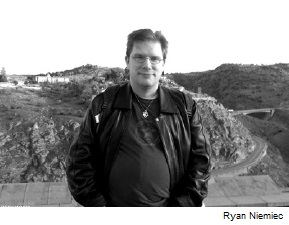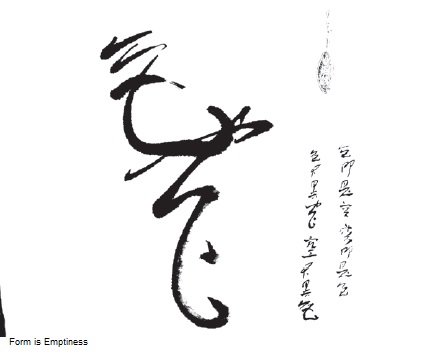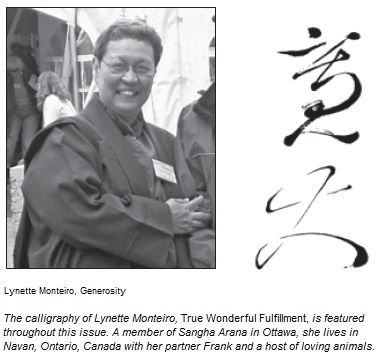Two scenarios for moving through a day of psychotherapy
By Ryan Niemiec

Several years ago I discovered the practice of mindfulness. This radically altered how I approach my work as a psychologist at the Saint Louis Behavioral Medicine Institute and as a behavioral health consultant. Every client who seeks treatment is suffering from some kind of distress; it is difficult for the therapist to be of help if his or her mind is mirroring the same chaos.
Two scenarios for moving through a day of psychotherapy
By Ryan Niemiec

Several years ago I discovered the practice of mindfulness. This radically altered how I approach my work as a psychologist at the Saint Louis Behavioral Medicine Institute and as a behavioral health consultant. Every client who seeks treatment is suffering from some kind of distress; it is difficult for the therapist to be of help if his or her mind is mirroring the same chaos. Here I describe a typical day before mindfulness, compared with how a typical day passes for me now...
Four Years Ago: Before Mindfulness
I speed into the fenced-in parking lot and skid into the parking space closest to the back door of the psychotherapy clinic. I balance a cup of coffee on some books and a lunch bag as I fumble out my keys. Picking up speed, I hurry down the narrow hallway to the waiting room where I ask my waiting client, Lisa, to follow me to my office. I have Lisa begin to tell me about her struggles while I hang up my coat, put my books and papers away, and prepare my notepad. I ruminate about the train that delayed me five minutes and the morning coffee I spilled on my shirt. Lisa is a talker so I sit back and let my mind wander while she rambles from topic to topic.
I wish Lisa a good week and call in my next appointment, Scott, a particularly challenging and defensive man. I find clever ways to avoid his challenges and work to out-smart his defensive speech. This seems to keep his anger at bay.

At midday, I attend a meeting with various administrators and therapists where there is a tight agenda filled with tasks to accomplish. I make a couple of suggestions for improving clinic relations in the community. Nobody seems to hear them and we transition to the next topic of caring for clients. I make an observation and propose an idea for how to better work with a particularly difficult client. One team member, Dr. Christopher, voices strong disagreement with the idea and explains why it would not work. I nod my head and sit quietly through the remainder of the meeting.

I leave the meeting irritated and call up my next client, Joe. For most of the session my mind wanders to Dr. Christopher’s critical comments and I begin to feel they were directed at me personally. This raises my anxiety level and my thoughts begin to scan my day. I evaluate my therapy work with Lisa, reflecting on other ideas I should have implemented in today’s meeting, and I quickly judge that I am not doing enough to help Scott. In the current session with Joe, I continue to nod and show facial expressions as if I am listening very closely and hanging on every word he is saying. With a vague idea of Joe’s conflict with his boss, I offer a general suggestion to journal more about this conflict and encourage him to sympathize more with his boss’s position. Joe thanks me for my suggestions as he leaves, leading me to believe I have done him some good.
I have five minutes between sessions to call a managed care (insurance) company to get authorization for more visits for a client. I dread making these calls. They never go smoothly. The workers transfer me to two different departments. I notice my frustration level rises and I begin to feel these people are inconveniencing me and wasting my time. A third voice comes on the line and tells me she is putting me on hold, and before I can respond the background music clicks on. Hearing the soft music further escalates my anger as I am forced to pause my busy day for a couple minutes. Realizing I cannot tolerate this injustice any longer, I count down from ten to one, curse at the music, and slam the phone down on the receiver.
I stomp off toward the waiting room to greet my next client, Sue. Along the way, I pass a colleague and I mumble something about how incompetent and insensitive all managed care workers are and how they prevent good therapists from doing their job. The colleague nods in acknowledgment and walks on.
Sue is very upset today. She is mourning some losses in her life. I don’t have much energy left after a ten-hour day of back-to-back clients, group sessions, and meetings. I listen for a while and drift off to planning what I will do next—my house needs some work, I could go to the store, and I deserve to relax with a beer and a movie. The session nears a close and I feel confused as to how I can help Sue today. I make a general and safe suggestion that she peruse her old photo albums and journal about her experience to manage her grief.
The day is finally over. I grab my coat and walk as fast as I can down the hallway, hoping no one will try to have a conversation with me. Leaving the clinic, I think about where I might stop for dinner.
Present Day: With Mindfulness
I listen to the engine transition from idle and click off. I have intentionally parked my car several rows back from the clinic’s back door so I can enjoy the walk. I feel the sensation of the sun’s rays on my right cheek as it makes its way through some cumulus clouds. As I open the clinic door, I see a dead cricket upside down on the ground. I allow this image to stay with me throughout the day.
Before meeting with my first client, Lisa, I prepare for the session with a brief meditation. I follow my breathing closely to bring about a concentrated awareness to start the therapy session. I feel a sense of clarity, which stays with me as I walk down the hallway. I feel very focused with Lisa. I challenge her verbosity and we explore the fears she hides with her words.

Following the session, I return to my meditation chair and silently concentrate on my breath. I let go of Lisa and our work today. I smile to the image of Scott, my next client. I return my focus fully to my breathing. I slowly stand and begin to walk, coordinating every three steps with my inhale and every four steps with my exhale. Scott begins the session with apathy and disdain, verbalizing his disinterest in being in therapy. He complains of people mistreating him. After empathizing with his struggles my mind begins to wander. I hear the sound of people’s voices in the hallway. This distraction builds and threatens to throw me off balance, drawing me into Scott’s stories and emotion. I ask Scott if he minds if I close my eyes while I listen to him. This opens my ears in a new way. I begin to deeply listen to Scott, hearing the pain and fear behind his defensive speech of disclaimers, his masculine façade of having it all together. Somehow Scott begins to open up deeper. He associates my closed eyes with my full, undivided attention. In this exchange of deeper awareness, honesty, and connection, he and I become aware of insights reflected in the present experience.
At a midday administrative meeting, my stomach tightens when my suggestions seem to go unnoticed. I deepen my breath to my abdomen, repeating the phrases commonly used by Thich Nhat Hanh: “Breathing in, I calm my body; breathing out, I smile; dwelling in this present moment; I know this is a wonderful moment.” My thoughts become more focused. I assert myself to the team leader, asking for the group to reconsider my ideas. Later, one group member, Dr. Christopher, rejects and criticizes my suggestion for improving a client’s health. My shoulders tense, my heartbeat increases, and beliefs of “I’m not helping anybody” and “I never say the right things” blanket my view. I reconnect with my breathing and decide I will address Dr. Christopher’s approach with me after the meeting so as not to risk embarrassing him in front of the team and to not take up time from the busy agenda. I also resolve that if he is busy after the meeting I will set up a time to speak with him later.
Before seeing my next client, Joe, I close my office door to take a two-minute break in my meditation chair. I anchor my attention to my breath and scan my body. I relax the tension that was beginning to creep into my shoulders. I practice letting go of my last meeting and my morning clients. I slowly walk to the waiting room, feeling my body transition with each step. I greet Joe with a warm smile and firm handshake. Remembering that my mind tends to wander quite a bit with Joe, I practice mindful listening. When my mind trails off, I return the focus to my breath, not Joe. This anchors me to the present moment in the room and re-opens my ears to listen deeply.
Between sessions, I make some administrative phone calls, mostly to managed care companies. It is not surprising to me when I am put on hold several times, transferred to incorrect departments, and challenged over my professional opinion. During the final call, I am put on hold for several minutes. I had kept my balance up to this point, but this seems to dig at me in a deeper way. As I become aware of the rising bodily and emotional tension, I shift my attitude. I see this phone call as an opportunity—a space to befriend the breath once again. This keeps me focused on what is most important for me to say for my client and it keeps me fresh for the person that begins to speak on the other line.
I am running late for my session with Sue but knowing the importance of breathing through the transitions and creating space for each person, I return to my meditation chair for a few deep breaths. In my session with Sue, I soon begin to feel overwhelmed by the amount of stress, sadness, abuse, and shame she is reflecting and experiencing. I listen carefully and only speak of those things I know to be true about her condition and express them as my perceptions, thus fallible. We conclude this emotional work with five minutes of silent breathing to pay respect to Sue’s openness and vulnerability with another being.
My workday is coming to a conclusion, but much of the day remains. I stand in the middle of the office to appreciate the fullness of the work and respect the energy that was present. With careful awareness, I flick off the light-switch and pull the door closed behind me. Leaving the clinic, I again notice the cricket and its particular position, now slanted a bit to the right. I smile to it and slowly turn to walk to my car.
Ryan Niemiec, Fullest Breath of the Heart, is a clinical psychologist in St. Louis, Missouri. He works in the Program for Psychology & Religion, helping ministers, priests, and nuns with mental health problems, as well as the Headache & Pain Management Program; he also teaches mindfulness.
From: Spoken Like a True Buddha, an unpublished compilation of stories about mindfulness practice in everyday life, edited by Carolyn Cleveland Schena and Sharron Mendel.

